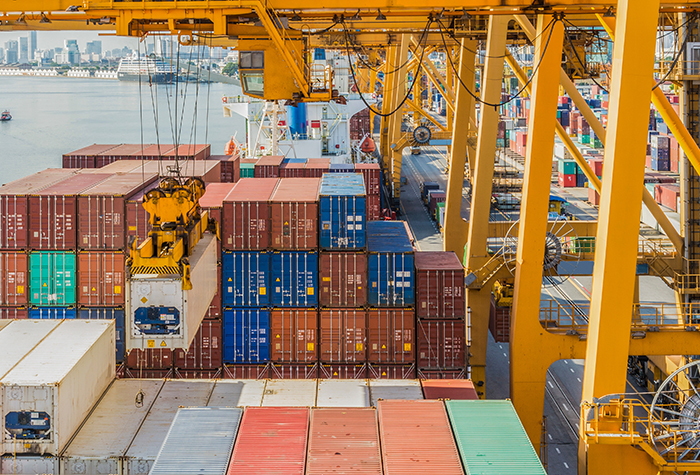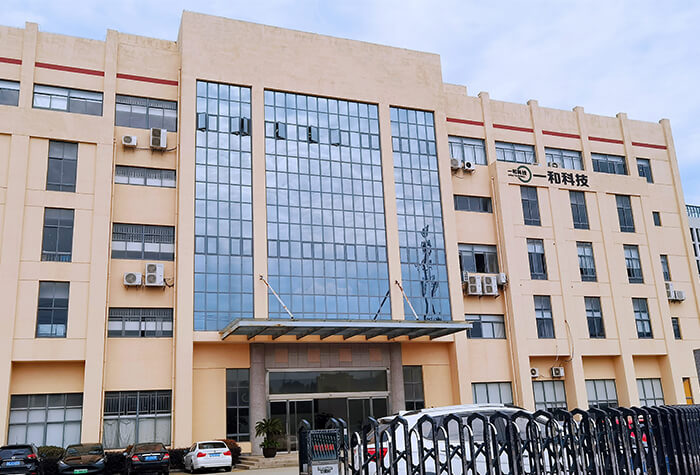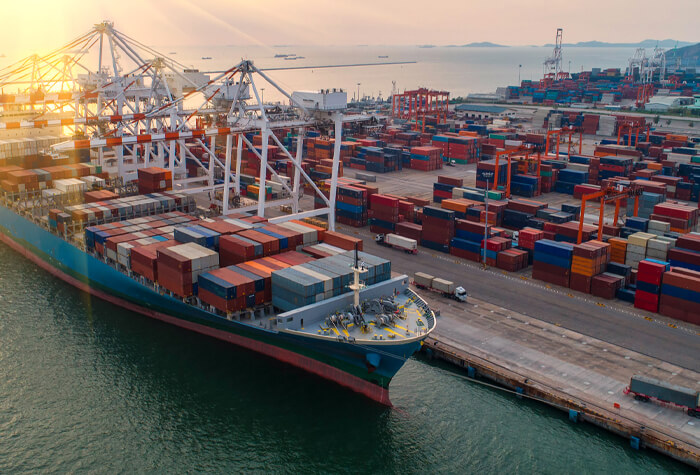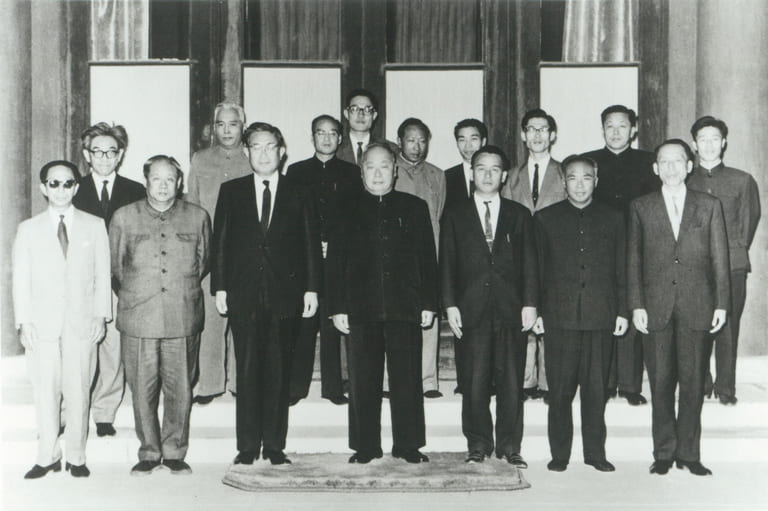ABOUT
About Western Japan Trading Co., Ltd.BRAND MESSAGE
Connecting people,
connecting things,
connecting feelings
Our role as a trading company is not only to mediate transactions.
We leverage our various functions as a trading company to provide smooth transactions and services
Strive to understand the thoughts and feelings of business partners and engage in activities to actualize them
Connect Japan with overseas business partners to build good relationships
Contribute to the promotion and development of friendly relations between countries through business transactions
Through smooth transactions, we hope to actualize various feelings,
and continue to be a company that is needed by society.
Our Services
-
Daily Delivery

-
NMPA (National Medical Products Administration) Cosmetic Raw Material Registration Agency

-
Exports

-
Inspector Team

-
Local Procurement

-
China Market Research

-
Japan-China Trade Consultation Desk

-
Ichiwa Technology

-
Dangerous Goods Export Agency

-
Proposal of Plant Equipment Manufactured in China

History of Japan-China Economy and Western Japan Trading
-
1960s:
The Beginning of Friendly Trade
Front row, left to right (beginning with second from left)
Liao Chengzhi, President of the Japan-China Friendship Association
Soichiro Ohara, Chairman of Kuraray (Kurashiki Rayon)
Chen Yi, Chinese Minister of Foreign Affairs
Kojiro Yamada, Senior Managing Director of Western Japan Trading
(All titles are as at time the photograph was taken.)
Visit to China to commemorate the completion of a vinylon plant State Council in Beijing, October 1965
Trade between Japan and China—which had been suspended due to the Nagasaki Flag Incident of May 1958 (an incident in which Japanese right-wing ultranationalists pulled down and damaged a Chinese national flag displayed at the venue of an exhibition of Chinese postage stamps and paper cuttings being held at a department store in Nagasaki)—was resumed in August 1960 by Chinese premier Zhou Enlai's "Three Principles on Trade with Japan."
Based on Zhou's Three Principles, trade began between trading companies ("friendly trading companies") approved as friendly enterprises by the China Council for the Promotion of International Trade and Japan-China friendship promotion organizations on the Japanese side, such as the Japan-China Friendship Association and the Association for the Promotion of International Trade, Japan (JAPIT).
From this time until the conclusion of the Japan-China Trade Agreement of 1974, trade between Japan and China was conducted only through these so-called friendly trading companies.
Shonai Morii and Kojiro Yamada—who had been at the forefront of the movement for the resumption and expansion of Japan-China trade in Japan's western Kansai region throughout the 1950s—established Western Japan Trading Co., Ltd. in April 1961, with the philosophy of contributing to the construction of socialism in China through trade, based on the relationships they had built with the Kansai economic community and related Chinese organizations through their activities. It was approved as one of the first group of friendly trading companies.
In 1963, a contract was signed to export a Kuraray vinylon plant, which would be the company's first plant export to China.
In 1966, the company became the trading company contact for six blast furnace companies exporting steel to China, and continued to develop as a major trading company responsible for friendly trade.
-
1970s:
The Era of Japan-China Trade DevelopmentWith the restoration of diplomatic relations between Japan and China in 1972, trade between Japan and China expanded rapidly.
Although China was in the midst of political turmoil due to the Cultural Revolution (1966–1976) initiated by Chairman Mao Zedong in 1966, economic construction had been steadily progressing during that time. In addition to the export of products such as steel and chemical fibers, Western Japan Trading also entered into large-scale contracts for national projects such as the construction of Shanghai Jinshan petrochemical complex (Kuraray PVA plant and Mitsubishi Petrochemical ethylene plant, etc.) and the modification of existing steel mills (air separation equipment, etc.) and port facilities (tugboats, crane ships, forklifts, etc.)
In 1972, steel exports to China changed to a joint business negotiation method, and Western Japan Trading subsequently played a central role in steel business negotiations as the lead trading company until the end of joint business negotiations in 1995.
-
1980s:
Beginning of Chinese Economic Reform or "Reform and Opening-Up"
(reform of the economic system and opening-up of the economy and culture to the outside world)The death of Chairman Mao in September 1976—followed by the subsequent arrest of Jiang Qing and other members of the Gang of Four—brought the 10-year Cultural Revolution to an end.
In December 1978, the Third Plenary Session of the 11th Central Committee of the Chinese Communist Party adopted a shift to reform and opening-up, and the transition from a socialist planned economy to a market economy began.
Based on the Chinese government's policy of emphasizing the stability of civilian lifestyles, China increased its imports of home appliances such as color TVs and radio cassette players, along with conventional basic materials and production facilities.
Western Japan Trading exported a large number of Hitachi and Sharp color TVs and radio cassette players, at the same time signing a contract with Hitachi's color TV assembly line and color TV cathode ray tube manufacturing plant for domestic production of color TVs. This became the foundation of China's TV industry continuing to this day.
-
1990s:
Beginning of the Socialist Market EconomyWith the process of reform and opening-up that began in the 1980s, China sought to fundamentally change the political and economic system of the socialist state that had existed since the founding of the country. It was carried out through a process of trial and error, causing confusion and discord in all aspects of society.
The turmoil peaked with the Tiananmen Square protests and massacre in June 1989, and the reform and opening-up policy seemed to have failed. But it regained momentum as a result of Deng Xiaoping's Southern Tour in the Spring of 1992, with its focus on bold reform and opening-up, and the idea of a "socialist market economy" was clearly laid out at the 14th National Congress of the Chinese Communist Party in October of the same year.
With the clear affirmation of the market economy and opening-up to the outside world, the Chinese economy shifted rapidly toward economic construction through the introduction of foreign capital, economic growth led by exports, opening-up of the market for that purpose, and liberalization of foreign trade.
In terms of trade between Japan and China, Japanese home appliance manufacturers opened a stream of factories in China, shifting from export to localized production and sale of appliances like color TVs, air conditioners, washing machines, and refrigerators.
For Western Japan Trading, exports of home appliances decreased significantly, but exports of equipment and materials for home appliances—such as manufacturing equipment for air conditioner compressors and production materials for color cathode ray tubes—increased significantly.
-
2000s:
The Era of Socialist Market Economy DevelopmentIn 2001, China joined the WTO, marking a new stage in the opening-up of the Chinese domestic market to the outside world, and the liberalization of trade.
With the liberalization of foreign companies' activities in China, direct foreign investment in China increased dramatically, and large-scale investments were made in rapid succession, shifting from existing light industries to the automotive industry and other such industries.
During this period, China's GDP increased to five times its previous size, from $1.211 trillion USD in 2000 to $6.087 trillion USD in 2010.
(For comparison, Japan's GDP was $4.888 trillion in 2000 and $5.7 trillion in 2010, China overtook us.)
West Japan Trading launched domestic sales (direct sales in Chinese yuan) through its local subsidiary West Japan Trading (Shanghai) Co., Ltd., which was established in 1996 in the Shanghai Free Trade Zone.
In 2007, Keiwa Trading (Shanghai) Co., Ltd. was established in Shanghai.
It went on to roll out various transaction formats such as inventory sales, DDP contracts, and bonded transactions, etc., utilizing its functions as a local corporation.
-
2010s:
Leaping Forward to Become an Economic PowerhouseIn September 2008, the global economy was devastated by the Global Financial Crisis, but as a result of the Chinese government's agile and bold fiscal stimulus China was already on track to recovery in April of the following year, achieving a miraculous V-shaped recovery.
Since 2010, China's economy has continued to develop, with the country's GDP growing from $6.087 trillion USD in 2010 to $14.72 trillion in 2020—three times the size of Japan's GDP ($5.05 trillion USD) and 70% that of the United States ($20.94 trillion USD).
China's production volume of many industrial products such as TVs and other home appliances, personal computers, and smartphones has become the world's largest, and the development of its automobile industry has been particularly remarkable. Despite having a production volume of only 2 million vehicles in 2000, by 2009 it had become the world's largest producer with 13.79 million vehicles, and in 2020 this figure grew to 25.22 million units.
Western Japan Trading increased its exports of various tools for automobile parts, functional films for liquid crystal panels, film coating equipment, and materials for the manufacture of electronic components. At the same time, we diversified our range of items offered in line with the growing sophistication of China's industrial structure, such as in importing large-scale steel structures for electrical substations.
Ichiwa Technology Co., Ltd. was established, and launched a series of initiatives to add new value beyond the functions of a trading company, such as the design and manufacture of automated inspection equipment for machine parts, modification (automation) of production lines, and support for the installation and adjustment of Japanese-made machine tools.
-
2020s:
A New Start for Sustainable DevelopmentWhile economic globalization continues to progress, there are also trends that flow against it, such as the rivalry between the US and China.
We are also facing new challenges in how to achieve sustainable development, by balancing environmental protection with economic activities.
The 2020s have now become an era in which both China and the wider world are seeking ways to achieve sustainable development in an unstable political environment.
China is advancing various initiatives for the sustainable development of its economy, such as the widespread popularization of new-energy vehicles, the expansion of wind and solar power generation, the use of hydrogen energy, and encouraging the collection and reuse of discarded home appliances and waste plastics.
Western Japan Trading is also expanding into new fields in line with developments in China, such as exporting films for power capacitors for use in new-energy vehicles and coating equipment for lithium battery separator films; purchasing and selling epoxy resin for power capacitors, and capacitors for use in inverters in China; and importing lithium battery units for electrically powered construction machinery.
